Nature has many miracles, such as air plants, which you can grow without soil, or moon flowers — night-blooming plants that open their large, fragrant blossoms in the evening and close them in the morning.
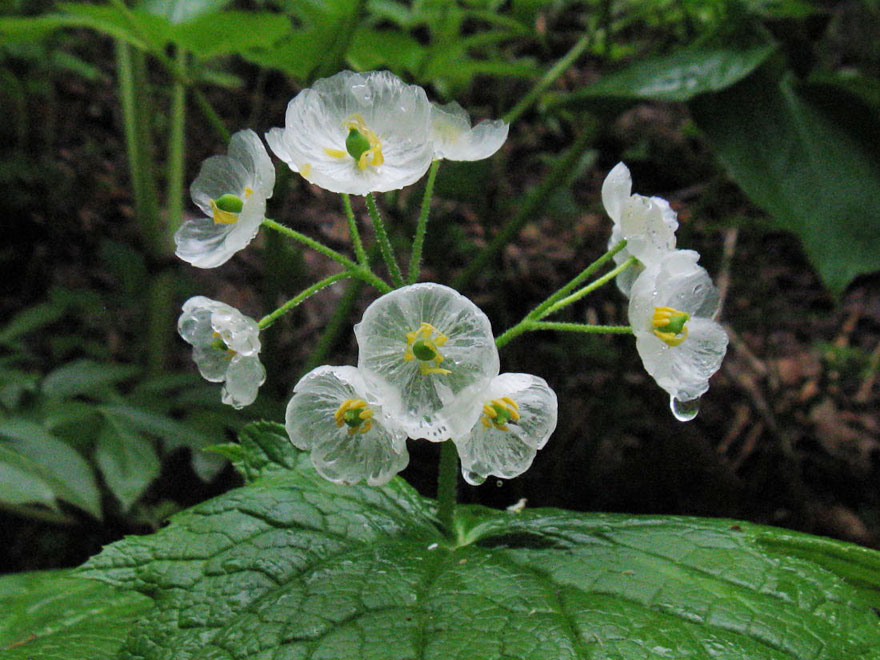
Say hello to the enchanting skeleton flower, transparent botanical wonder, also known by its scientific name Diphylleia grayi. This delicate, mystical, white woodland bloom, aptly named for its striking resemblance to the skeleton, has captivated the hearts of plant enthusiasts and nature lovers alike.
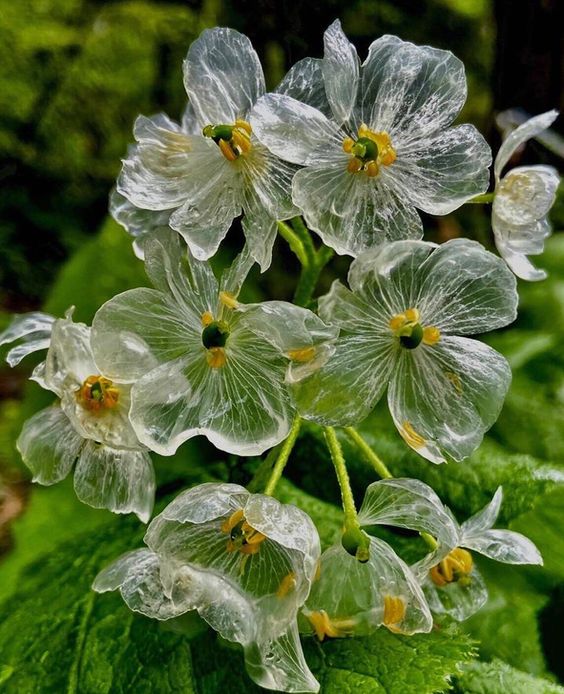
Diphylleia grayi is also called an umbrella plant or Asian umbrella leaf because of its native habitat and growing green foliage with clusters of tiny white flowers. The skeleton flower, a member of the Berberidaceae plant family, is known for its ethereal, bone-white petals.
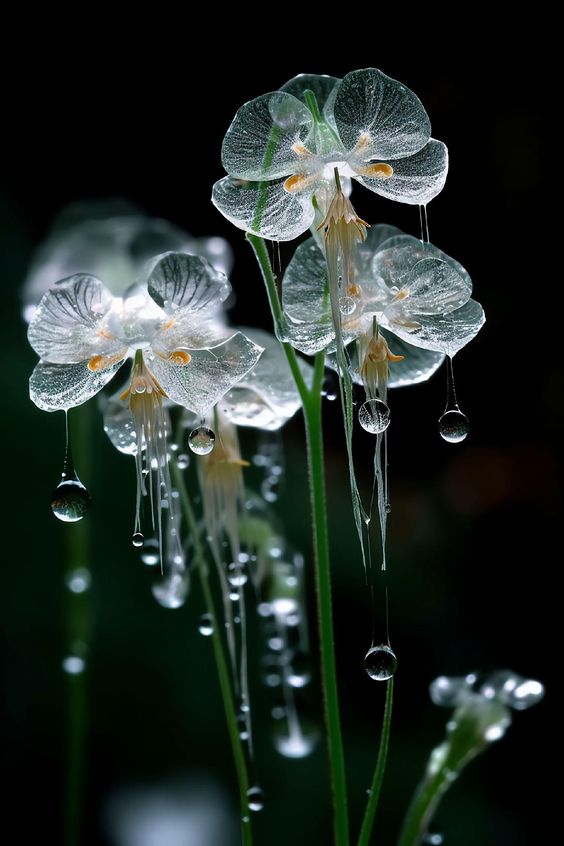
Skeleton flower earns its intriguing name due to its remarkable reaction to water, mainly rain. So, why do skeleton flowers turn transparent? A transformation occurs when raindrops touch this unique bloom’s delicate, bone-white petals. So, what exactly happens when it rains on a skeleton flower?
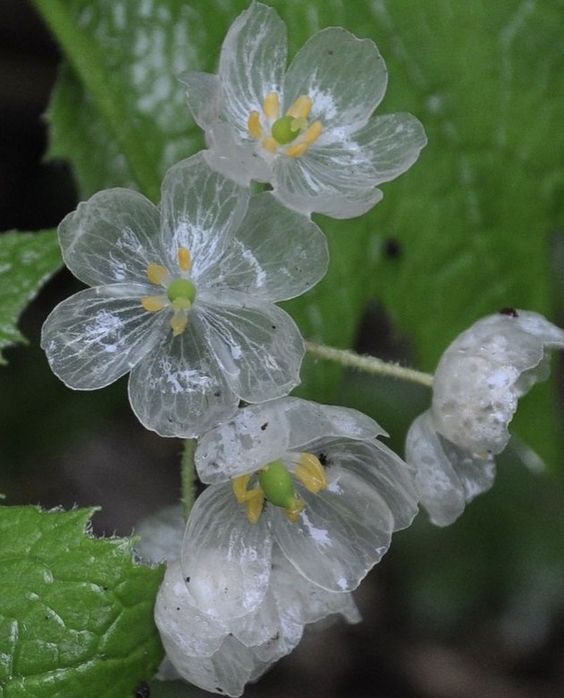
The petals, which initially appear solid and opaque, gradually become translucent, revealing the intricate network of veins resembling a skeleton’s structure, hence the name. It happens because the fragile petals lose their pigment when wet. As the flowers dry up, they turn white again. This flower, transparent like delicate lace veils, unveils its inner beauty with grace and mystery.
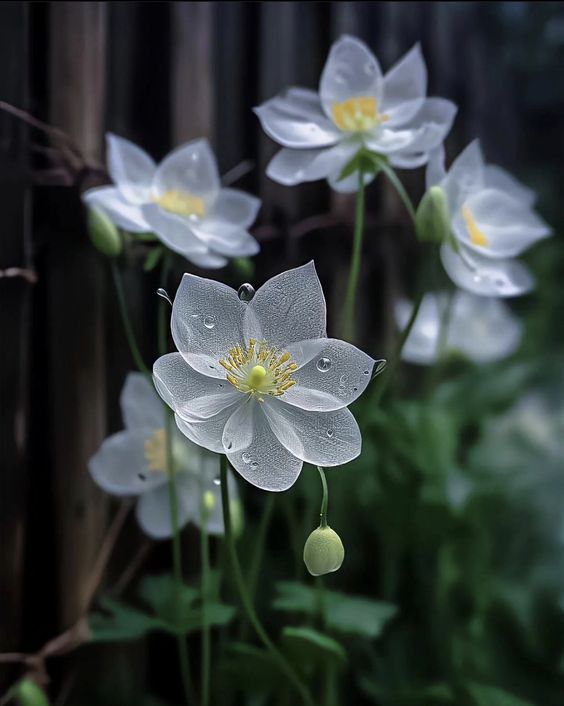
Skeleton flowers grow in the mountain regions of China and Japan or the Appalachian mountains in the USA, where they prefer shady and moist conditions under the canopy of deciduous trees. They are hardy in USDA zones 4 to 9, but you can quickly acclimate the plants to colder regions. They aren’t suitable for indoors or container gardening, as they need a dormancy period in winter and well-drained mulch rich in organic matter.
How to Care for a Skeleton Flower?
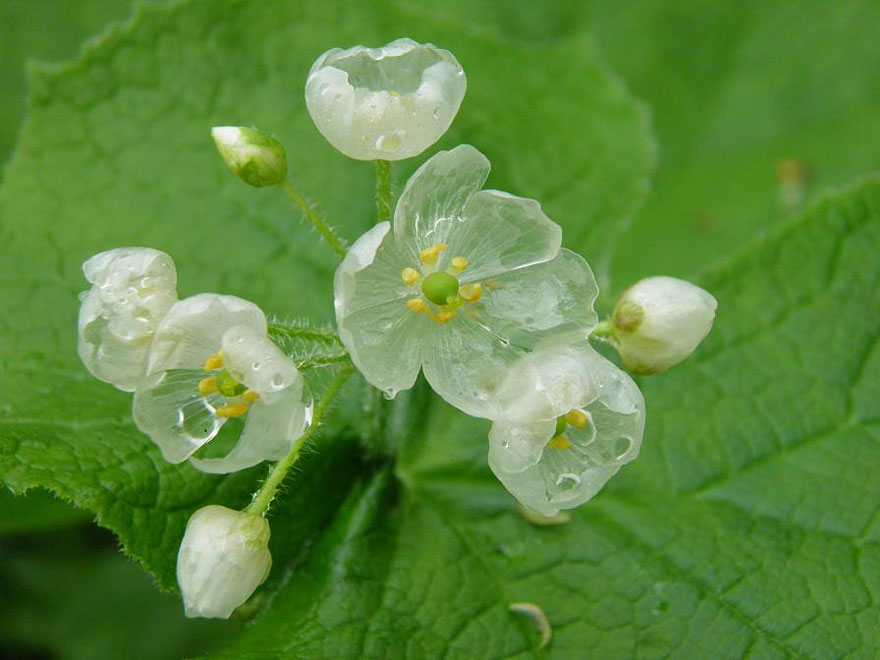
The skeleton flower doesn’t require much maintenance, grows naturally in the woods, and is generally resistant to pests or diseases. This transparent flower is very sensitive to sunlight, so it’s best to plant it in shady locations, as it requires partial to complete shade. However, there are a few more skeleton flower care tips. Here are some of them:
- Increase the watering of the skeleton flower plant when the top layer of soil feels dry.
- During a dry period, ensure a constant supply of water. You should water it slowly and deeply by drip irrigation.
- Add a thin layer of mulch around the base of the plant to help maintain consistent moisture levels.
- Apply a complete fertilizer in the early spring if there isn’t natural organic matter from fallen leaves.
- The plant dies back during the winter. If you live in Zones 4 to 9, the plant can survive freezing temperatures with a light layer of mulch.

